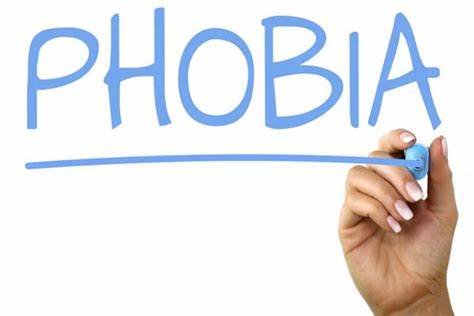Introduction
This blog explores why it is essential to distinguish between the person and the diagnosis when discussing mental health. When diagnosed with a mental health condition, it is easy to forget that a person is behind the diagnosis. Clinical diagnosis can lead to misconceptions and negative attitudes toward those diagnosed. It is important to remember that a diagnosis is not a death sentence. Many people with mental health issues can and do recover with the proper treatment. Most people with mental health issues will never need hospitalization or medication. Many vital strategies can help people with mental health issues recover. These include psycho-education, self-management skills, and a supportive living environment. Recovery is possible. But it is important to remember that a mental health diagnosis does not reflect the person.
What is the Difference Between a Diagnosis and a Person?
When discussing mental health, it is essential to distinguish between the person and the diagnosis. A diagnosis is an official label given to an individual evaluated by a mental health professional. This label can give people valuable information about their symptoms and allow them to access treatment. But it is important to remember that the diagnosis is not the person. A diagnosis reflects the symptoms a person is experiencing, not their identity or value as an individual. Diagnoses are a tool to help people understand and manage their symptoms, not a reflection of their character or capabilities.
Why Does It Matter?
People with mental health diagnoses are often stigmatized and treated differently than their peers. Diagnosis can have a severe impact on their recovery and quality of life. If we fail to distinguish between the person and the diagnosis, we implicitly reinforce the idea that a mental health diagnosis is a definitive statement about someone’s character. Diagnosis can lead to prejudice, discrimination, and damaging attitudes toward those with mental health issues.
If we fail to distinguish between the person and the diagnosis, we implicitly reinforce the idea that a mental health diagnosis is a definitive statement about someone’s character or worth. This can lead to stigma and discrimination directed at people experiencing a mental health challenge and limit their ability to access the necessary services and support.
UNLEASH’s Youth Mental wellbeing projects involve different programs aiming to create safe and supportive dialogue and discussion around mental health, supporting young people in understanding and proactively looking after their mental wellbeing, helping to reduce stigma, and creating a culture of inclusivity. By achieving this, UNLEASH creates environments that support everyone, regardless of their ability, to learn and develop.
Funding from the Big Change Fund allowed UNLEASH to create and pilot its Community Guide Programme, which offers young people access to locally trained, volunteer Mental Wellbeing Guide(s) for ongoing support and guidance in their local community. In addition, UNLEASH was able to directly employ more Mental Health Practitioners who have specialist skills and can provide tailored support to young people. This has enabled the organization to respond to the heightened effects of the pandemic regarding increasing mental health issues. It has now seen UNLEASH spread its programs across seven different cities.
Our responsibility as individuals is to be understanding and open-minded regarding mental health and challenge any stigma. We must strive to see people, not diagnoses. Especially in the workplace, colleagues must actively advocate for compassionate conversations about mental health and support those struggling with mental health issues by providing tangible tools and helping create an understanding and accepting environment.
Examples of How Distinguishing the Diagnosis from the Person Matters
One of the most critical aspects of recovery for an individual with a mental health diagnosis is access to a supportive living environment. Full recovery can be difficult if people view themselves as “their diagnosis” rather than individuals. People may be discriminated against when searching for housing or employment because of their mental health diagnosis. Lack of access to housing and employment can devastate an individual’s recovery. Separating the person from the diagnosis is so crucial for these reasons. It is vital that individuals feel seen and valued for who they are, not for their mental health diagnosis.
Creating a safe, supportive living environment is one of the most critical steps to ensuring full mental health recovery—access to suitable housing, supportive services, and a community that is understanding and non-judgmental. Early intervention and treatment can also be extremely helpful in preventing more difficult symptoms from arising and promoting a more successful recovery. Consistent treatment and support can make the recovery process smoother and more comfortable for the individual. Individuals must create a sense of balance and stability, significantly contributing to recovery.
Conclusion
Mental health diagnoses are valuable tools for understanding and managing symptoms. But it is important to remember that the diagnosis does not define the person. Distinguishing the diagnosis from the person is fundamental for reducing stigma and promoting recovery for individuals with mental health diagnoses. We must always strive to see and value people for who they are, not for their diagnosis.
Max E. Guttman is the owner of Mindful Living LCSW, PLLC, a private mental health practice in Yonkers, New York.
- Max E. Guttmanhttps://mentalhealthaffairs.blog/author/max-e-guttman/
- Max E. Guttmanhttps://mentalhealthaffairs.blog/author/max-e-guttman/
- Max E. Guttmanhttps://mentalhealthaffairs.blog/author/max-e-guttman/
- Max E. Guttmanhttps://mentalhealthaffairs.blog/author/max-e-guttman/






